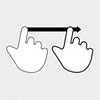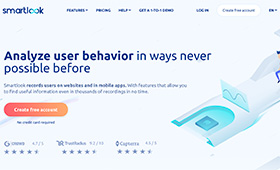An Introduction to Eye Tracking Technology
When a person looks at a website, what is the first thing that draws attention? Where do they look? Are they ignoring the things which they are supposed to see? When testing a website, these are some of the questions that can be answered with eye tracking.
Eye Tracking Technology
Eye tracking is a behavioral research method which objectively quantifies visual activity. It helps researchers observe learning methods, diagnose medical conditions, or even study cognitive responses, depending on which field of study they are in.
Unlike the first eye trackers that were used back in the day, modern day eye trackers are now less obtrusive and made for the respondent to act in a natural setting. These devices can come as remote trackers. They are perfect in screen-based or desktop settings, or head-mounted which is typical for testing in real-life or virtual settings.
Here’s an infographic that shows you just exactly how it works:
The Metrics
Fixation, gaze points, heat maps, areas of interest (AOI), fixation sequences, respondent count, and Time to First Fixation (TTFF) are some of the basic metrics in eye tracking. Advanced metrics reveal emotional arousal and valence to help researchers see the bigger picture. Advance eye tracking metrics may include pupil size/dilation, distance to the screen, ocular vergence, and blinks. This pocket guide goes deep into each of these basic and advanced eye tracking metrics.
When coupled with additional biosensors, a researcher is given a more validated assumption about the subject’s behavior because it looks into more behavioral aspects.
Eye Tracking in Usability Testing
In usability testing, the use of eye tracking is fast rising. It’s role in usability testing cannot be discounted. After all, the way it works is pretty straightforward. Unlike other research methods, eye tracking does not rely on experience. It rather gives you direct insight into how a viewer reacts with different kinds of visual stimulation.
Although eye tracking may come at a steep price, its value in usability testing can be unmatched. Imagine an ineffective call to action in a website that’s causing you to lose out on revenue. This research method will give you the actual data of how a website is performing and what it’s doing for your business.







No responses yet to “An Introduction to Eye Tracking Technology”